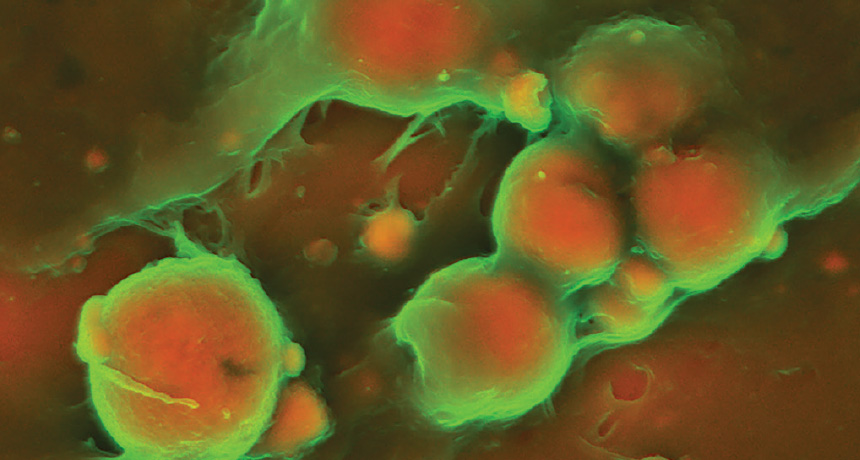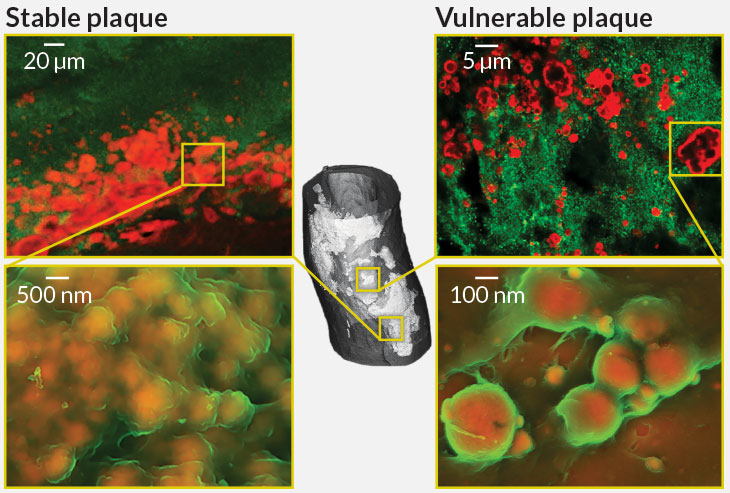Images probe artery-hardening plaques
Close look reveals which deposits pose heart attack risks

HAZARDOUS CLUMPS The protein collagen (green) coats plaque (red) on the wall of a human artery. These small pockets of plaque are vulnerable to breaking away and possibly triggering a heart attack.
J.D. Hutcheson et al/Nature Materials 2016







